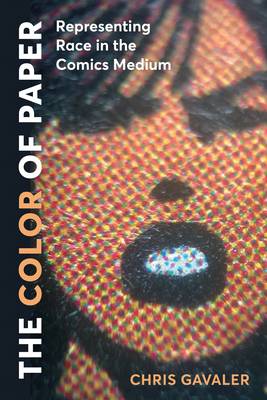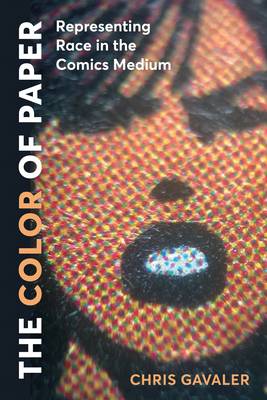
- Afhalen na 1 uur in een winkel met voorraad
- Gratis thuislevering in België vanaf € 30
- Ruim aanbod met 7 miljoen producten
- Afhalen na 1 uur in een winkel met voorraad
- Gratis thuislevering in België vanaf € 30
- Ruim aanbod met 7 miljoen producten
Zoeken
€ 209,45
+ 418 punten
Uitvoering
Omschrijving
How does a comics reader understand that a certain race is assigned to a character? In The Color of Paper, Chris Gavaler establishes a formal approach for analyzing racial representations in comics, demonstrating that the ink-on-paper materiality of comics reveals the illogic of metaphorical colors as racial categorizations. Analyzing images by a wide range of comics artists and colorists, including Emilee Denich, Jaime Hernandez, George Herriman, Jack Kirby, and Ben Passmore, Gavaler goes beyond pigment and gradient to explore the formal and material elements of page backgrounds and the negative space of gutters that literally frame race in comics. He surveys major and independent publishers to assess how industry trends and evolving coloring techniques affect racial representation. And, breaking from subjective and overgeneralized analytical norms, Gavaler grounds his analysis in quantitative research on viewers' responses. The centuries-old relationships between drawn racial markers and assumptions about their meanings continue in a white-dominated culture that benefits from and therefore preserves illusions of their natural accuracy. Denaturalizing racial depictions through formal visual analysis potentially alters racial thinking in ways that extend beyond works on paper and into daily lives.
Specificaties
Betrokkenen
- Auteur(s):
- Uitgeverij:
Inhoud
- Aantal bladzijden:
- 292
- Taal:
- Engels
- Reeks:
Eigenschappen
- Productcode (EAN):
- 9780814216040
- Verschijningsdatum:
- 6/02/2026
- Uitvoering:
- Hardcover
- Formaat:
- Genaaid
- Afmetingen:
- 152 mm x 229 mm
- Gewicht:
- 453 g

Alleen bij Standaard Boekhandel
+ 418 punten op je klantenkaart van Standaard Boekhandel
Beoordelingen
We publiceren alleen reviews die voldoen aan de voorwaarden voor reviews. Bekijk onze voorwaarden voor reviews.








